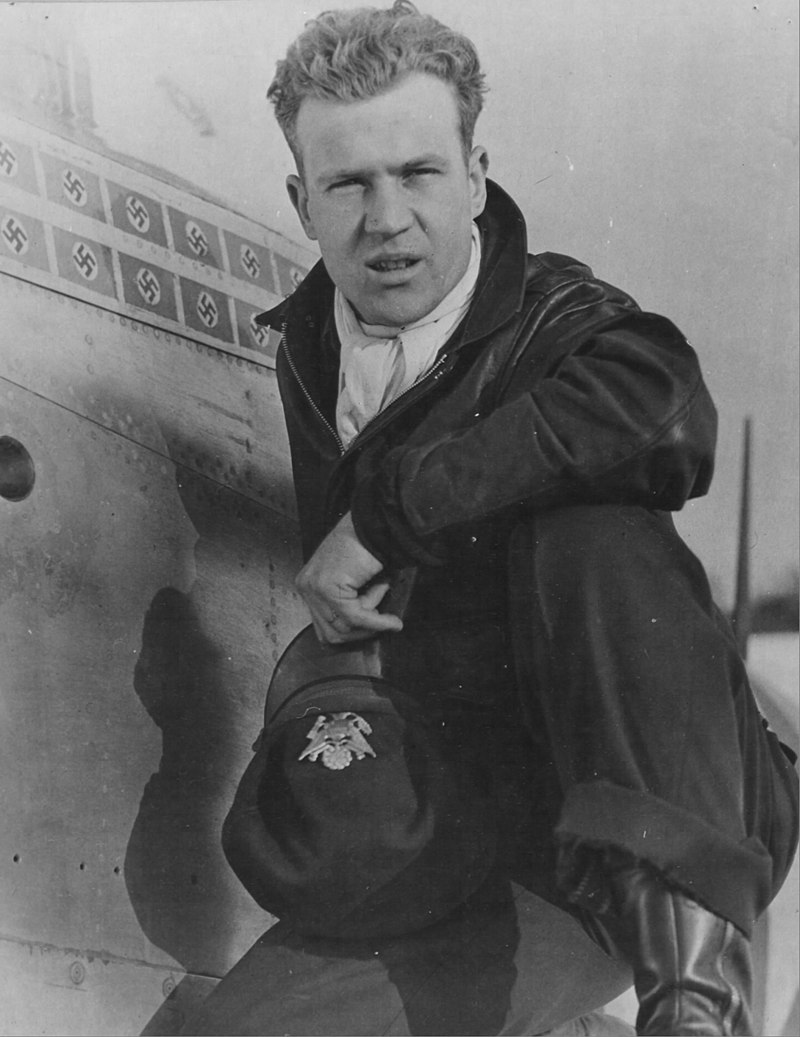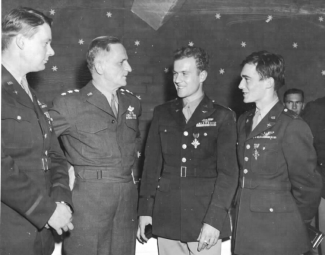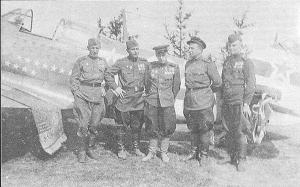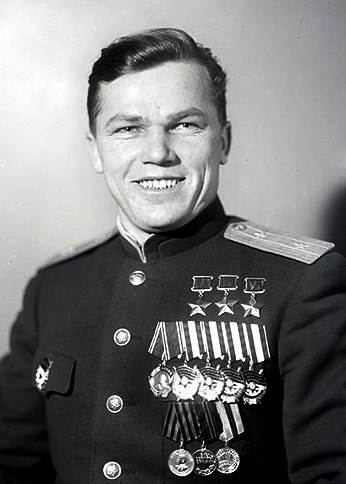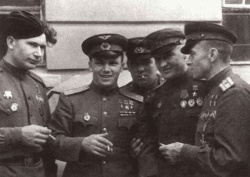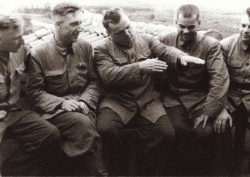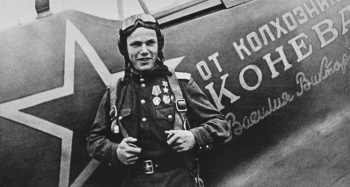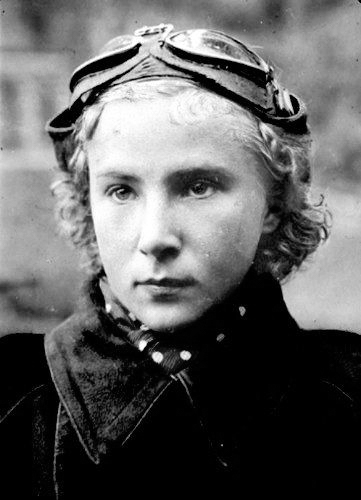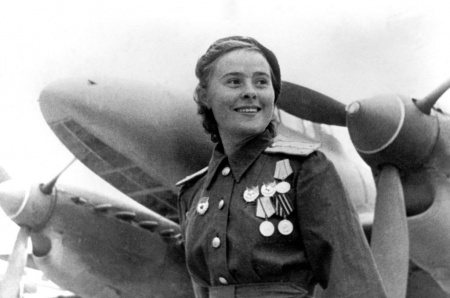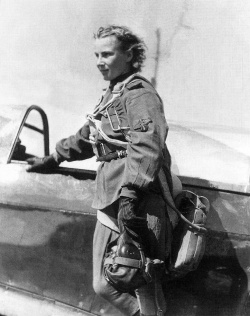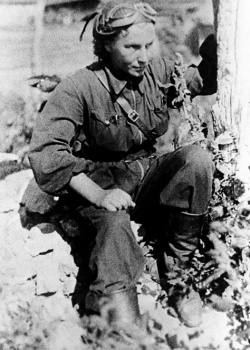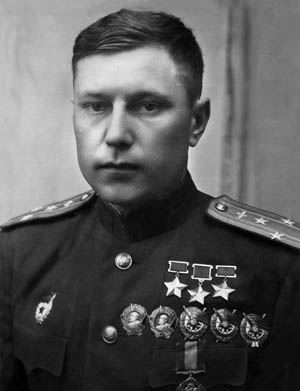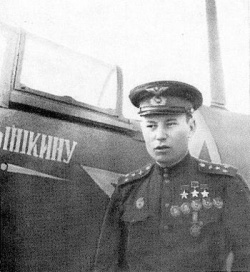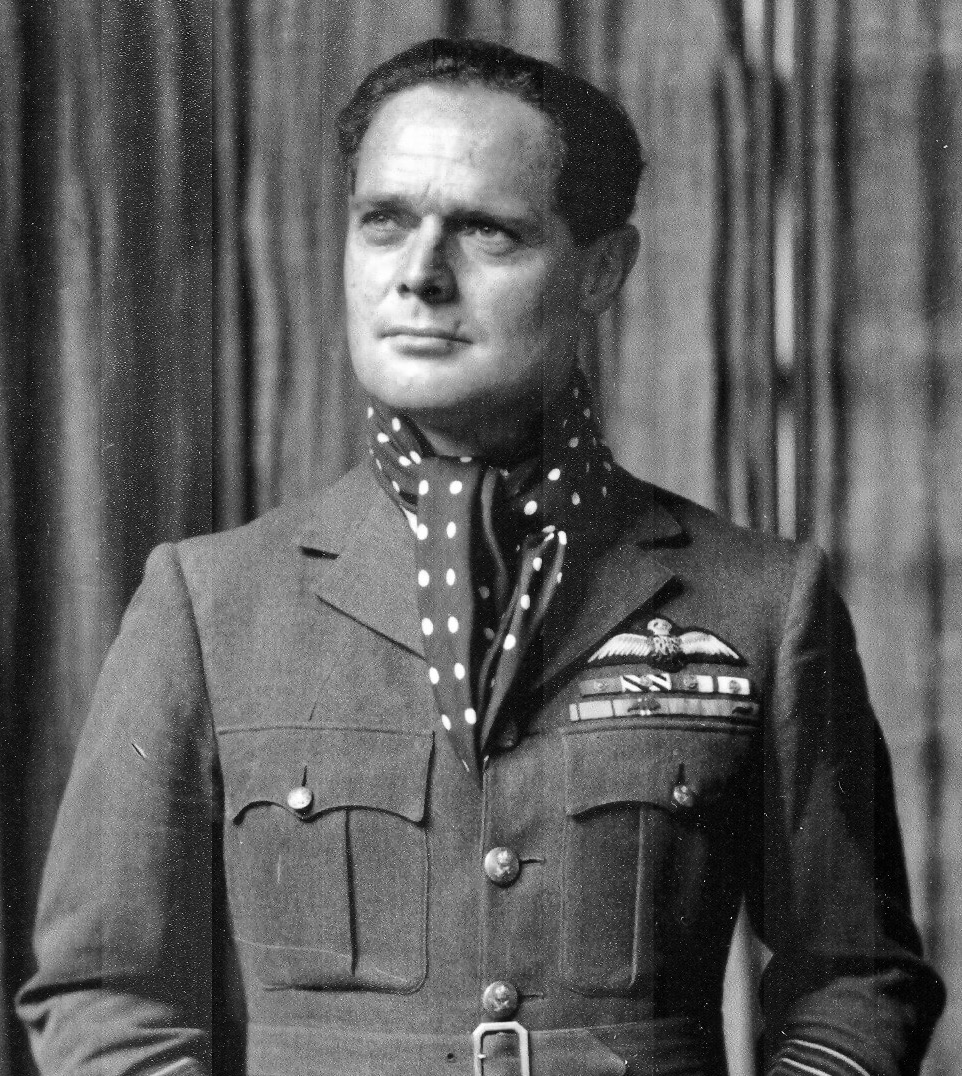AN_TRN_26's Page
This page was the 2652nd page created in this wiki. There are currently 24,036 pages and growing. So far betweem 399,089 users (of which 209 are actively editing), 185,596 edits have been made, how many of them are yours?
| Wiki Moderator Since 2018 |
| This member plays War Thunder on Windows |
 |
This member considers Yak-2 KABB the best USSR aircraft in game. |
 |
This member considers XP-55 Ascender the best USA aircraft in game. |
 |
This member considers Fw 190 A-5 the best Germany aircraft in game. |
Contents
Aces of World War II
USA
Bong, Richard I.
General
War Expeirence
Tactics
Media
Bostwick, George E.
General
War Experience
Tactics
Media
Wetmore, Ray S.
General
Raymond Shuey Wetmore grew up in central California amid farm land, the son of a farmer.[1] Growing up Wetmore had the opportunity to take a short ride in an airplane when a flying circus came through, although he was largely unimpressed with the flight. It wasn’t until 1941 when he enlisted into the Army Air Corps that he chose to take the route of a pilot. In 1942 he started flight school as an aviation cadet and graduated in March 1943. With his pilot’s wings, Wetmore was next assigned to the 359th Fighter Group out of England with his first assignment flying P-47 Thunderbolts.[2]
War Experience
One instance Wetmore proved himself as a fighter pilot came when was leading "Red Section" over Merseburg while escorting bombers. During the flight, the bombers were jumped by approximately 30 Bf 109 fighters, reacting to this, Wetmore told his section to drop their external fuel tanks and bank to intercept. The P-51s were travelling too fast to target the Bf 109s who performed a split-ess. While overshooting, this caused the German fighters to split up and made it easier for the American pilots to select and chase a target. Wetmore singled one German fighter out and flew to within 400 meters before he opened fire. Several rounds hit the 109 in the wing root and fuselage and the German pilot reacted by deploying his combat flaps allowing him to slow down and perform a split-ess. Wetmore was in jeopardy of overshooting, however, he was able to make a quick burst into the German fighter which converted into a descending barrel roll which developed into a flat spin of which he did not recover from. As Wetmore was ascending back up to the fray, he was “bounced” or jumped by 15 to 20 Bf 109s at around 6,000 ft. Making a tight turn to avoid the attackers, Wetmore was able to take advantage of the attackers lack of tactics and was able to get behind one where when at a 70° deflection, Wetmore fired a quick burst which all struck the cockpit, apparently killing the pilot as the plane ended up stalling out and tumbling to the ground.[1]
|
Recalling later when his flight came across approximately 100 German Bf 109 fighters..."In order to defend ourselves, we had to attack."[2]
|
Another instance came when flying near Drummer Lake, looking below himself, Wetmore saw a flight of four Fw 190s following in a trail and called out to have he and his wing-man make the bounce on them. Wetmore singled out one of the 190s and at a 20-degree deflection opened fire at 300 meters. The German pilot attempted to extend his gear, however, ended up performing a belly landing which resulted in the destruction of the aircraft and killing the pilot. Selecting a second target, Wetmore gave chase and from very close range, Wetmore fired a short burst and in the 190s attempt to make a break ended up snapping the aircraft into the ground and exploding. Taking on a third target, again within 300 meters, Wetmore opened fire making several positive contacts resulting in the 190 spinning out of control into the ground.[3] Wetmore caught up with his wing-mate and noticed his canopy had frosted over and could not see very well let alone able to make an accurate shot. Both P-51 pilots were able to hit the fourth target with short bursts causing the German fighter to belly land on the snow-covered ground. Wetmore made for a go-around and fired several more shots into the downed fighter causing it to catch fire.[1][2]
The pinnacle of Wetmore's combat achievements happened on 15 March 1945 when he shot down a rocket-powered Me 163.[2] In his own words, he stated: "I dived with him and leveled off at 2,000 ft at six o'clock. During the dive my IAS was between 550 and 600 mph. I opened fire at 200 yards. Pieces flew all over. He made a sharp turn to the right, and I gave him another short burst, and half of his left wing flew off, and the plane caught on fire. The pilot bailed out and I saw the E/A [enemy aircraft] crash into the ground."[4]
Tactics
Wetmore's preferred tactic whether it was in the P-47 or in the P-51 was to get in close behind the enemy and wait for a deflection shot. Typically he would wait until around 300 - 400 meters and pause until the target aircraft would manoeuvre to allow for a 20° - 70° deflection shot. Apparently, Wetmore had exceptional eyesight as during his reports he would recall where his shots landed on the enemy aircraft, specifically noting "wing-root", "cockpit" or "engine."[1]
Situations, where Wetmore and his wingmen were outnumbered, did not deter them from attacking or taking on a numerically superior enemy. Wetmore took the side of divide-and-conquer trying to take on smaller amounts of enemies, however, remained cool under combat when that did not work out and more enemy aircraft jumped into the fight than expected.
Media
War Thunder's Weapons of Victory - Daddy's Girl
-
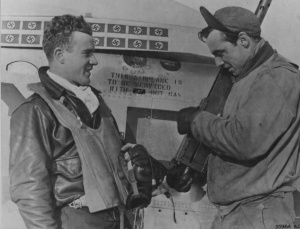 Ray S. Wetmore (left) converses with his armourer Sgt Locklyn Sangster who is in the process of servicing one of the P-51D's several machine guns.
Ray S. Wetmore (left) converses with his armourer Sgt Locklyn Sangster who is in the process of servicing one of the P-51D's several machine guns. -
 Ray S. Wetmore preparing to taxi for takeoff in his P-51 Daddy's Girl.
Ray S. Wetmore preparing to taxi for takeoff in his P-51 Daddy's Girl. -
 Ray S. Wetmore being carried from his P-51B after a successful mission by his ground crew.
Ray S. Wetmore being carried from his P-51B after a successful mission by his ground crew.
Germany
Hartmann, Erich A.
General
War Expierence
Tactics
Media
Marseille, Hans-Joachim
General
War Expierence
Tactics
Media
USSR
Dolgushin, Sergei F.
General
War Expierence
Tactics
Media
War Thunder's Weapons of Victory - Dolgushin's La-7
Golovachev, Pavel Y.
General
War Expierence
Tactics
Media
War Thunder's Weapons of Victory - Golovachev's Yak-9M
Kozhedub, Ivan N.
- Top allied fighter ace, three times Hero of the Soviet Union
General
Ivan Nikitovich Kozhedub's first flying experience was as a teenager when he learned how to fly through the local Shostkinsk aeroclub where they flew Polikarpov U-2 (trainer versions of the PO-2) and UTI-16 (two-seat trainer version of the I-16).[5] The "U" in the aircraft name is the Russian uchebny which means "trainer." In 1940 he joined the Soviet military and graduated from Chuhuiv Military Air School in 1941 around the time the German's began their invasion of the Soviet Union. Eager to get to the front, Kozhedub was denied a transfer, instead, his superiors recognized his knowledge and expertise around the aircraft along with his ability to teach and retained him as a pilot instructor.[6] Ivan remained at the school for two more years instructing many pilots who would transfer to the front lines.[5][6] It was during the process of teaching the student pilots that Kozhedub refined his own abilities as a pilot. Finally, in 1943 Kozhedub after several denied requests to go to the front, was granted a transfer to the 240th IAP.
War Experience
Now on the front lines, Kozhedub was provided with one of the new Lavochkin La-5 fighters. In March 1943, Kozhedub flew on his first combat sortie and it would be one that he would not forget, as while focusing on one target, he developed tunnel vision and did not see two Bf 109s which descended upon him and riddled his aircraft with holes.[5] Able to get away, Kozhedub limped his aircraft back to base where it had to be scrapped after he landed. Lessons learned here taught him that you must always look around and keep an eye on the enemy at all times. Religated to older fighters, Kozhedub did not give up and began to increase his tally score of aerial victories as the months went on.[6] Kozhedub exercised confidence and technique and incorporated it with the experience he was gaining. Initially, he started out as part of a squadron, usually working in pairs when going after enemy aircraft, sometimes as bait and other times an attacker. Bomber escort duty was also necessary, but that didn't stop him from adding victory stars to his aircraft. Over time Kozhedub was provided with another new La-5 and several months later he was given an upgraded La-5F and then a La-5FN.[6]
In 1944 as Kozhedub was generating a significant tally of downed enemy aircraft, he was transitioned into the new La-7, which he determined to be the best fighter aircraft in the world and held that belief even after the war.[7] Aerial victory number 55 was especially memorable for Kozhedub, as while he and a partner were flying on patrol, they spotted an unusual aircraft which was travelling faster than what their La-7s could do. The aircraft turned out to be a German jet fighter, the Me 262 which could outrun them. Eager to attempt to shoot down the jet, Kozhedub's partner shot at the jet, spooking the pilot which caused him to turn to the left, right in front of Kozhedub. Losing enough speed in the turn, the jet was an easy target, one which Kozhedub unloaded on, knocking it out of the sky.[7][6] By the time the war had ended, Kozhedub had 64 confirmed aerial victories, however, it is estimated he had over 100, many of those others were shared kills in which he gave the full credit to the other pilot rather than take it for himself.[7]
Preferred Tactics
Kozhedub was a pilot of patience, waiting until almost on top of his target before letting loose his weapons. With nose-mounted cannons in La-5, La-5FN and La-7, setting gun convergence was not necessary, yet, Kozhedub typically waited until he was within 200 - 300 meters before firing and preferred unloading on an aircraft through deflection shooting or by aiming ahead of the target while it was climbing, diving or banking left or right. In an interview with Aviation History magazine, Kozhedub stated that while he respected the courage of German aces, he did not pay much attention to them, instead, he focused on "trying to guess as soon as possible the plans and methods of my enemy, and find weak spots in his tactics."[8]
|
I always felt respect for an enemy pilot whose plane I failed to down.
|
Describing attacking a target, Kozhedub stated, "I chose a victim and came in quite close to it. The main thing was to fire in time."[8] However, it was important to avoid tunnel vision when following a target hence why it was important to maintain caution as "caution is all-important and you have to turn your head 360-degrees all the time", a valuable lesson he learned in his first combat sortie in 1943. "The victory belonged to those who knew their planes and weapons inside out and had the initiative."[8]
Kozhedub spent the early years of the war from 1940 to 1942 as a pilot instructor. While learning to fly always takes time (Kozhedub was required 100 hours of flight time before he was first licensed at the aeroclub) and with the Great Patriotic war heating up, many new recruits were eager to get flying and mastering skills as quickly as possible and as often as eager students tend to do,"...young pilots often ask how they can learn to fly a fighter quickly; I came to the conclusion that the main thing is to master the technique of pilotage and firing. If a fighter pilot can control his plane automatically, he can correctly carry out a maneuver [sic], quickly approach an enemy, aim at his plane precisely and destroy him. It is also important to be resourceful in any situation."[8]
Keeping a cool head and knowing your surroundings were critical for setting up a battle to the attacker's advantage and here, "the main thing was to attack enemy planes during turns, ascents or descents, and not to lose precious seconds..."[8] because any second lost was an opportunity for the opponent to turn the tables and take any advantage away.
Media
Litvyak, Lydia V.
- First female fighter pilot to shoot down an enemy aircraft
- First female ace
General
Lydia Vladimirovna Litvyak, born in 1921 in Moscow and found an early love of aviation where she enrolled in a local flying club at the age of 14.[9][10] By age 15, Litvyak had performed her first solo flight.[11] By the time she was 18, Litvyak had become a flight instructor at the Kalinin Airclub and training 45 pilots by the time the German-Soviet war broke out in 1941.[12] By June 1941 Litvyak applied to join a military aviation unit, however, the recruiter noted that she did not have enough flight hours (1,000 total flight hours were needed) and rejected her application. Undeterred, Litvyak went to the next closest recruiting office and listed her pre-war flight time at over 1,000 hours, thus “meeting” the requirements, she was admitted into Soviet military aviation.[12][10]
After military basic training, Litvyak was assigned to Marina Raskova’s female air combat unit, Air Group 122, which included three regiments, the 586th Fighter Regiment, 687th Bomber regiment along with the famous 588th Night Bomber Regiment (the Night Witches).[11][9][10] Litvyak was assigned to the 586th Fighter regiment where she was selected to and trained on the single-seat Yakovlev Yak-1 fighter aircraft. At the time more advanced fighter aircraft such as the LaGG-3 was reserved for male pilots, whereas the female pilots were allotted the older Yak-1 aircraft.[9]
Litvyak was not a cookie-cutter military recruit and often found ways to express her individuality, including bleaching her hair with peroxide after being required to cut it short and adding a fur collar to her standard-issued military uniform. In spite of her rebelliousness, Raskova determined that Litvyak was a “brilliant pilot with instincts and gifts no training could provide.”[11]
War Experience
Lydia Litvyak’s first opportunity to fly combat patrols started in the summer of 1942 where she and others were assigned to fly defence missions over the city of Saratov, an important city and major port on the Volga River. After a successful assignment, Litvyak and other female pilots were transferred to a male flying regiment near Stalingrad (current-day Russian: Волгогра́д, English: Volgograd).[9] It was here on September 13, 1942, in which Litvyak was pitted in her first dogfight against Jagdgeschwader 53, one of Germany’s most lethal fighter units at the time.[10] It was during this event in which Litvyak shot down her first two enemy aircraft, a Ju 88 bomber and a Bf 109 G-2 piloted by German 11-kill ace Erwin Meier.[11] After Meier was allowed to meet the pilot who shot him down, he was shocked when it turned out to be Litvyak and refused to believe it was her until she explained in great detail the dogfight which lead to his being shot down.[9][12] Upon realizing the truth, he offered his gold watch to Litvyak as a sign of his respect where she stated:
|
"I don’t accept gifts from my enemies."
|
This began a series of successful missions in which she proved herself as a fighter pilot and earned the respect of the other pilots. Over the next few months, Litvyak racked up several more kills both as the sole attacker and shared attacks with fellow pilots of German Ju 88 bombers, Bf 109s and a Fw 190. Opportunities for combat lessened, mostly due to the senior leadership of Litvyak’s flying regiment and so she was transferred to the 9th Guard Fighter Regiment in early January 1943.[12] The men of this unit flew LaGG-3s and so the squadron did not have the facilities to repair the Yak-1 fighters. Coupled with this and the units upgrade to Bell P-39 Aerocobras, the female pilots with their Yaks were moved to the 73rd Guard Fighter Regiment which did have facilities to repair the Yaks.[11] It was here with the 73rd that Litvyak was promoted to Junior Lieutenant. Due to her fierceness in the air and her proven abilities, Litvyak was selected to participate in an experiment dubbed “Okhotniki” or “free-hunter”, an elite aerial fighting tactic which allowed specific pilots to fly in pairs, hunting the skies for enemy aircraft to seek and destroy at will and racked up a few more aerial victories.
In May of 1943, the German artillery was utilizing an observation balloon to report the location of Soviet soldiers, snipers and equipment to German artillery crews on the ground with great success. Attempts were made to destroy the balloon, however, all Soviet fighter attacks which attempted to attack the balloon were repulsed by heavy anti-aircraft fire.[9] Litvyak volunteered to attack the balloon but was turned down. For Litvyak, “no” meant looking for another way to get the job done. This time she approached her flight commander with a plan to fly a wide circle around the active battlefield and attack the balloon from the rear from over German-occupied territory. The plan was accepted and Litvyak took off. The plan worked flawlessly as she was able to come in from the rear of the balloon and get close enough to ignite the hydrogen-filled balloon with her tracer bullets, sending it to the ground in a crumpled heap.[11]
August 1943 proved to be Lydia Litvyak’s final flights where on her 4th sortie of the day on August 1st escorting IL-2 attackers, her flight was attacked by German Bf 109s. Focused on attacking a Ju 88 bomber, Litvyak did not see the two Bf 109s descend on her tail.[11] Another pilot from her flight, Ivan Borisenko recalled, “Lily just didn’t see the Messerschmitt 109s flying cover for the German Bombers. A pair of them dived on her and when she did see them she turned to meet them. Then they disappeared behind a cloud.” Borisenko last saw Litvyak’s Yak through a gap in the clouds which at that time was pouring out smoke and at that point being pursued by as many as eight Bf 109s. When an opportunity presented itself, Borisenko descended below the clouds but did not see her, a parachute or results of an explosion, however, she never returned from that mission.[12][10]
Litvyak was listed as missing in action, however, the full truth is not known. There are accounts of a Yak-1 discovered near the battlefield with a female who had a fatal head wound and was buried in a village nearby, however, there are also accounts of a female pilot parachuting to safety and then captured by German forces. Also listed is an account of fellow POWs recognizing her in a POW camp. Stalin was known to state any Russians taken as POW were considered to be traitors, so it is possible if she was captured, she may have avoided returning to a hostile Soviet Union. To this day there are many speculations as to the end of Lydia Litvyak, but no definite proof.
- Aircraft flown
- Yak-1 - White 02
- Yak-1 - Red 32
- Yak-1 - Yellow 44
- Yak-1 - White 23
- Yak-1b – unknown
Preferred Tactics
Lydia Litvyak, was a fearless pilot who took to the skies in her Yak-1 fighter, an underdog when compared to the German Bf 109s both in firepower and overall aircraft characteristics, never-the-less, Litvyak outperformed even some of Germany’s best.[13] One tactic Litvyak utilised was to attack the bombers, in doing so, this would bring in the escorting Bf 109s which she would then work into a dogfight. Not all fights went in her favour as she brought back to base several heavily beat-up aircraft including one which she had to belly-land. Even when wounded, she opted to get back into a fighter and return to the melee. Litvyak also found success when hunting with a partner and teaming up on enemy aircraft brought down a number of them.[11] It was a combination of instinct and brute force which kept Litvyak fighting even when at against all odds until the end.
Media
Pokryshkin, Alexander I.
- The first pilot to achieve Hero of the Soviet Union three times[14]
- All time highest scoring pilot in an American made fighter (47 kills in a P-39)
General
Alexander Ivanovich Pokryshkin was of Russian ethnicity, born in Novosibisk (Siberia). Pokryshkin’s father was a first generation factory worker and due to not having much money, the family was raised in the poor and crime-ridden part of town.[14] Rather than following the crowd, Pokryshkin followed his own path which noted by his peers as they called him “Engineer”. While at an airshow when he was 12 years old, Pokryshkin developed a fascination for flying. After finishing school, he found work as a construction worker, however, this was not to last very long as in 1930 he left home to attend a technical college where he excelled and earned his degree in 18 months. Finishing this, Pokryshkin then enlisted in the army to follow his dreams and be sent to aviation school. Unfortunately the flight school was closed and all of the cadets were transferred to become aircraft mechanics. Although requests for transfer were made, none were granted.[14]
Determined not to let this drag him down, Pokryshkin decided to put in his all and excel as a mechanic. Graduating from the mechanic school in 1933, he then rose quickly through the ranks and by December 1934 was promoted to Senior Aviation Mechanic with the 74th Rifle Division where he worked until 1938. While working as a flight mechanic, Pokryshkin worked at improving the equipment he worked on which included making improvements to the ShKAS machine guns and the R-5 reconnaissance aircraft.[14] This would ultimately play to his favour later on when higher-ups would try to have him court-martialed. During vacation times, Pokryshkin studied flight manuals and enrolled in a local aeroclub where he learned to fly glider aircraft. During one stint of leave, tested for engine powered aircraft and was able to perform a solo flight and earn his flying license in just under three weeks. Having this flying license automatically qualified him for flight school in which he was accepted.
War Expierence
Pokryshkin’s first assignment took him very close to the battlefront, into Moldavia, June 1941. On June 22nd, the first day of the war, his airfield was bombed, however, he and his aircraft survived without incident. Unfortunately, the next day was his first combat experience which ended in disaster. While patrolling with his squad in MiG-3s, he happened upon an aircraft which he had never seen, taking the opportunity, he opened fire and shot down the aircraft. To his horror, as the aircraft was going down, he noticed the red star on the wings. This aircraft was the new secret Soviet Su-2 light bomber and to prevent his wingmates from shooting down any others, Pokryshkin flew between them and the bombers to prevent any other loss. Pokryshkin was vindicated as the next day he and a wingman were jumped by five Bf 109s where he was able to shoot one down. He scored several more victories, however as luck would have it, he was shot down by German flak behind enemy lines. Pokryshkin spent the next four days working his way back to his base.[14]
|
"One who hasn't fought in 1941–1942 has not truly tasted war".
|
Early on in the fighting, Pokryshkin began to realize that the aerial combat doctrine taught by the Soviets was extremely outdated and he began to take extensive notes of battles and dogfights he and others were going through, looking to find a more efficient and better way to tactically fight.[14] Combat at that time was a treasure trove of information in which Pokryshkin took very detailed notes and ideas to improve over the outdated tactics. Items which he had to factor in were that Soviet pilots were in constant retreat, lacked controlling assistance from HQ and always up against a superior opponent with the odds stacked against them. Pokryshkin had his work cut out for him.[15]
In 1942, Pokryshkin’s squadron was outfitted with the Yak-1 fighter (replacing the MiG-3). Still the underdog against the German Bf 109s, he employed his new tactics with much success. During one light bomber/attacker escort, Pokryshkin was jumped by two Bf 109G-2 “Gustav” fighters. Now separated from his wingman, Pokryshkin attempted to dive away, however realizing the German fighters were faster and heavier, it would only be a matter of time before they would catch up, so he manoeuvred into a chandelle and then barrel-rolled which caused the first Gustav to overshoot, placing him within the Yak’s gunsights. Pokryshkin opened fire and shot the Gustav down. Although Pokryshkin’s aircraft was damaged by the second Gustav, he performed another barrel roll causing the Bf 109 to slide forward into gun range and was subsequently shot down. Pokryshkin proved that a lesser aircraft could outperform a superior aircraft if the proper tactics were employed.[14]
Later during the summer of 1942, the Yak-1 fighters were replaced by the newer lend-lease American P-39 fighters.[14] While not a favourite aircraft of the American pilots and ultimately rejected by the British, the P-39s found a home with the Soviets who put the fighters to good use. The tide was beginning to turn in the Soviets favour as they started to implement Pokryshkin’s tactics which included stacking different aircraft at different altitudes, basically creating a net so that any incoming enemy fighters if attempting to escape would be intercepted by the different layers of Soviet aircraft.[15] Also at this time, ground-based radar, forward controllers and advanced central ground control systems were implemented which were able to help feed real-time information to the pilots in the air and give them a head start on inbound enemy aircraft.
Now outfitted with the P-39K-1s, Pokryshkin once again began to pounce on the Germans. His very first combat flight in the P-39 netted him one Bf 109, however, days later he scored four more and another 8 over the next couple weeks. One of the tactics Pokryshkin learned was that German flights tended to become disoriented and demoralized when the flight leader was shot down and would typically retreat, so he started attacking the flight leader on the initial run into a group. Taking on the most experienced enemy was a difficult task, however with that pilot out of the way it was much easier for his wingmates to go after the rest that did not flee. It was on 23 June 1943 that Pokryshkin traded in his P-39K-1 “White 13” for the now famous P-39N-0 known as “White 100”. White 100 was Pokryshkin’s call sign for the rest of the war and became a call sign feared by German pilots. Transferred down to Ukraine, when escorting Pe-2 bombers, Pokryshkin would break radio silence to announce he was flying and during those times, the Pe-2 bombers performed their tasks without the threat of German fighters because they would not fly “White 100” was in the air.[15][14]
|
"Achtung! Achtung! Pokryshkin ist in der Luft" (English: "Attention! Attention!, Pokryshkin is in the air")
|
Tactics
Pokryskin rewrote the tactical doctrine for Soviet fighters to replace the outdated doctrine he was trained with. It was crucial as a pilot to have advantages which included altitude, speed, manoeuvrability all of which put you behind the enemy to fire on them.[15][14] Even when outclassed and overmatched, tactics could equal the playing field or even transfer the advantage if the pilot knew what they were doing.
|
"The battle training of a fighter pilot, as I see it, is complex process... the formula: altitude, speed, maneuver, and fire."[15]
|
Especially true with the P-39 fighters was the need to be in close when firing as the 37 mm shell had a slower velocity than machine gun rounds and with enough distance could be avoided, in close, it was much more difficult. The new doctrine also included flying with wingmates or squads to allow for watching each other’s backs whether firing at the enemy or just announcing their positions so the wingmates could avoid them. Demoralization was another tactic Pokryshkin employed to great success where he would exclusively target the enemy squad leaders (typically German aces themselves) and eliminate them first. This aggressiveness often caused the enemy fighters to become disoriented or flee the area in retreat. So effective were the tactics, just calling out that “100” was flying in the area kept the Germans from flying that day.
- Aircraft Flown
- MiG-3 - 7
- MiG-3 - 4
- MiG-3 - 01
- MiG-3 - White 5'
- MiG-3 - 67
- Yak-1B - unknown
- P-39K-1 - White 13
- P-39N-0 - White 100
- P-39N-5 - White 100
- P-39D - White 17
- P-39Q-15 - White 50
Media
- War Thunder News: Birthday of Alexander Pokryshkin
- War Thunder Ace of the Month: Alexander Pokryshkin
-
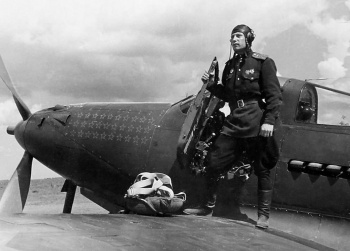 Image of Alexander Pokryshkin standing at the door of a P-39 lend-lease fighter.
Image of Alexander Pokryshkin standing at the door of a P-39 lend-lease fighter. -
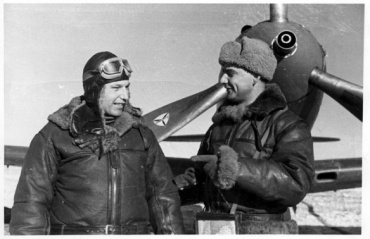 Alexander Pokryshkin and fellow squademate Dmitry Glinka standing before one of their lend-lease P-39 fighters.
Alexander Pokryshkin and fellow squademate Dmitry Glinka standing before one of their lend-lease P-39 fighters.
Zhukovsky, Sergey Y.
General
War Expierence
Tactics
Media
Great Britain
Bader, Douglas R.S.B.
- British fighter ace who flew with no legs.
General
Sir Douglas Robert Steuart Bader was born in London, England in 1910. Bader’s father fought in World War I, however, due to injuries sustained in the war, died in 1922. Bader’s mother remarried, however, due to his high energy levels and unruliness, Bader was sent away often to his grandparent's house and later was sent as a border to a prep school. This proved to be what he needed as sports became his outlet for expending energy and competitiveness. Rugby and any other physical confrontations with bigger and older opponents became his go to.Cite error: The opening <ref> tag is malformed or has a bad nameCite error: Closing </ref> missing for <ref> tag
[3]
[2]
[4]
[8]
[7]
[5]
[6]
[13]
[11]
[9]
[12]
[10]
[16]
[17]
[18]
[19]
[20]
[15]
[14]
[21]
[22]
- ↑ 1.0 1.1 1.2 1.3 Cite error: Invalid
<ref>tag; no text was provided for refs namedHess - ↑ 2.0 2.1 2.2 2.3 2.4 Gaijin. (2015, April 24). [Weapons of Victory] P-51D Daddy's Girl. Retrieved from https://warthunder.com/en/news/3010--en
- ↑ 3.0 3.1 Wyllie, A. (2004). Army Air Force victories. Morrisville, NC: Lulu.
- ↑ 4.0 4.1 Baldridge, C., Fogg, J., & Fogg, R. (n.d.). A Manifest Spirit: The 359th Fighter Group 1943-1945 (1st ed.). CreateSpace Independent Publishing Platform.
- ↑ 5.0 5.1 5.2 5.3 Лицар неба Іван Кожедуб. [Knight of the skies Ivan Kozhedub] (2010.). Retrieved from https://poltava.to/news/3210/
- ↑ 6.0 6.1 6.2 6.3 6.4 6.5 Prominent Russians: Ivan Kozhedub. (n.d.). Retrieved from https://russiapedia.rt.com/prominent-russians/military/ivan-kozhedub/
- ↑ 7.0 7.1 7.2 7.3 Bourne, Merfyn (2013). The Second World War in the Air: The story of air combat in every theatre of World War Two. Troubador Publishing Limited. 978-1-78088-677-0. p.263.
- ↑ 8.0 8.1 8.2 8.3 8.4 8.5 Guttmann, J. (2000, September). Interview with Ivan Kozhedub. Aviation History.
- ↑ 9.0 9.1 9.2 9.3 9.4 9.5 9.6 White, E. (2017, October 06). The Short, Daring Life of Lilya Litvyak. Retrieved from https://www.theparisreview.org/blog/2017/10/06/short-daring-life-lilya-litvyak-white-rose-stalingrad/
- ↑ 10.0 10.1 10.2 10.3 10.4 10.5 Simonovich, S. (2018). Pilot Profile: Lydia Litvyak, the World's First Female Fighter Ace. Retrieved from https://aviationoiloutlet.com/blog/lydia-litvyak-first-female-fighter-ace/
- ↑ 11.0 11.1 11.2 11.3 11.4 11.5 11.6 11.7 11.8 Courtney, C. (2018, October 06). The First Female Flying Ace: Lydia Litvyak. Retrieved from https://disciplesofflight.com/first-female-ace-lydia-litvyak/
- ↑ 12.0 12.1 12.2 12.3 12.4 12.5 Chen, C. P. (n.d.). Lydia Litvyak. Retrieved from https://ww2db.com/person_bio.php?person_id=433
- ↑ 13.0 13.1 Thompson, B. (2012). Retrieved from http://www.badassoftheweek.com/litvyak.html
- ↑ 14.00 14.01 14.02 14.03 14.04 14.05 14.06 14.07 14.08 14.09 14.10 Chlon, C. J. (2018, November 01). Site Navigation. Retrieved from https://warfarehistorynetwork.com/daily/innovative-soviet-fighter-ace-2/
- ↑ 15.0 15.1 15.2 15.3 15.4 15.5 Simha, R. K. (2014, June 07). Alexander Pokryshkin: The air ace who terrorised the Luftwaffe. Retrieved from https://www.rbth.com/blogs/2014/06/07/alexander_pokryshkin_the_air_ace_who_terrorised_the_luftwaffe_35823
- ↑ Vassilopoulos, D. (2018, October 15). John Agorastos Plagis. Retrieved from https://www.greeks-in-foreign-cockpits.com/pilots-crews/fighter-pilots/john-agorastos-plagis/
- ↑ Aces of World War 2. (n.d.). Ioannis Agorastos "Johnny" Plagis. Retrieved from https://acesofww2.com/rhodesia/aces/plagis/
- ↑ Donjon, Y. (2007). René Challe. Retrieved from http://chezpeps.free.fr/bruno-challe/@/rene_challe.htm
- ↑ Généalogie de René CHALLE. (n.d.). Retrieved from https://gw.geneanet.org/garric?lang=fr&p=rene&n=challe
- ↑ Alexander, J. H. (2016, April 27). Trial by Fire at Coral Sea. Retrieved from https://www.historynet.com/trial-by-fire-at-coral-sea.htm#
- ↑ Nye, L. (2019, January 28). That time the RAF bombed a POW camp with an artificial leg. Retrieved from https://www.wearethemighty.com/history/douglas-bader-replacement-leg-ace?rebelltitem=1#rebelltitem1
- ↑ Hull, M. D. (2018, December 12). Site Navigation. Retrieved from https://warfarehistorynetwork.com/daily/wwii/fighter-ace-douglas-bader-the-rafs-legless-legend/


